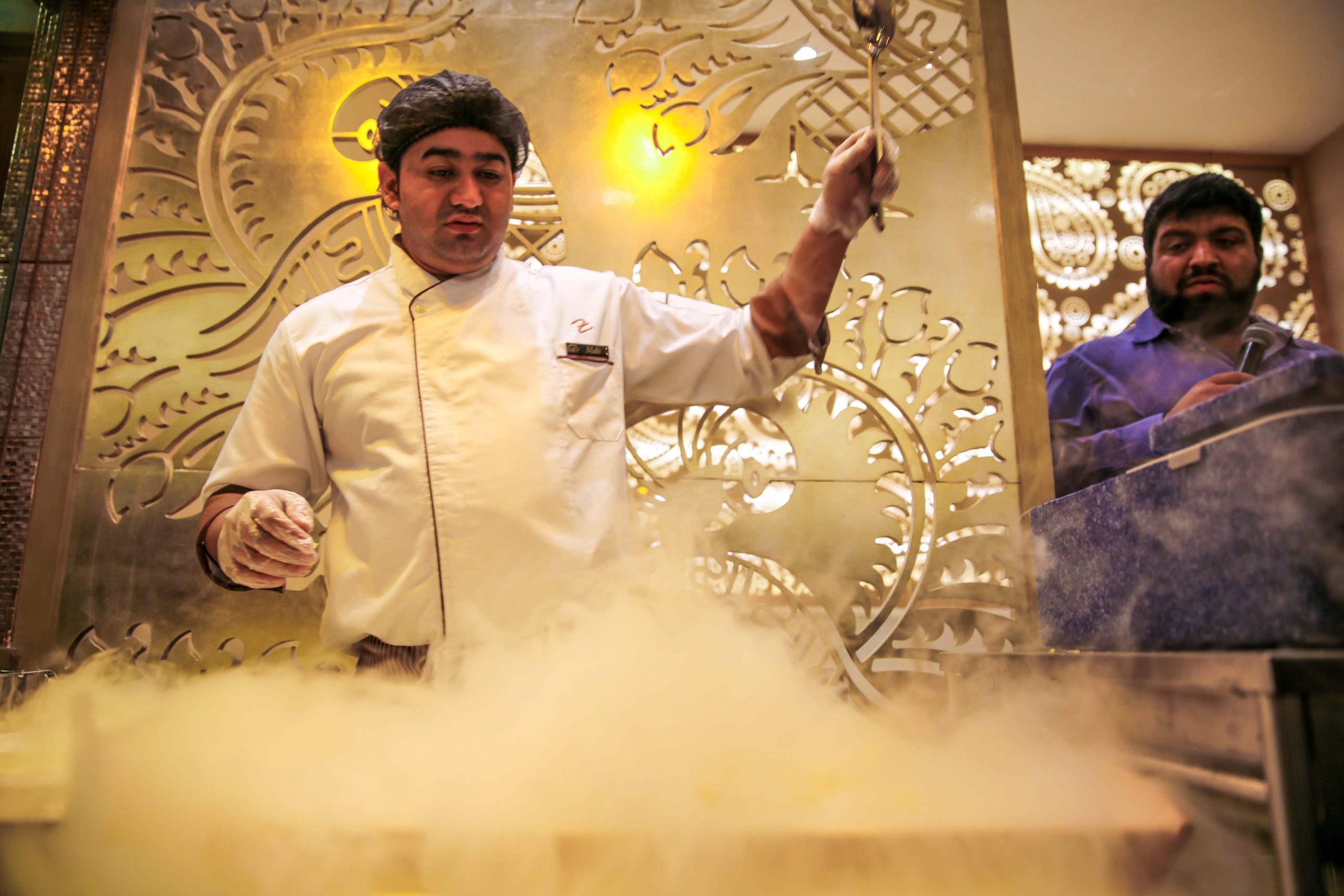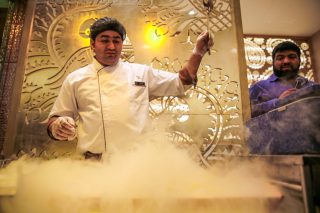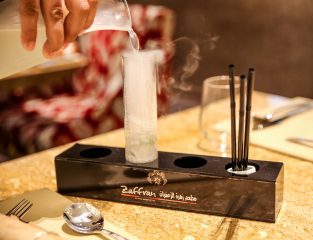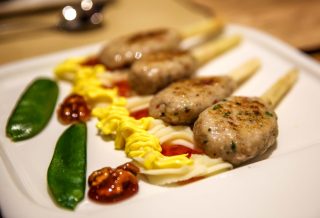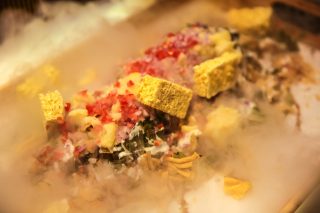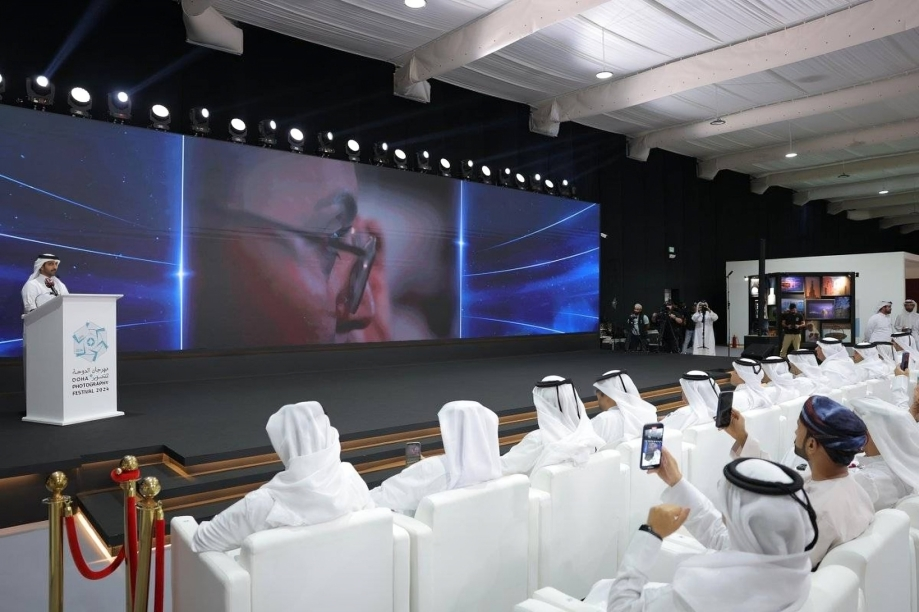All photos by Chantelle D’mello
Combining carbon dioxide, calcium and liquid nitrogen may sound like the start of a chemistry experiment, but a new restaurant in Qatar is using the scientific substances to push the boundaries of its menu.

The concept, dubbed molecular gastronomy, is a subdiscipline of food science that focuses on the chemical reactions in food. It’s led to chefs and restaurants creating new textures and flavors in food while reimagining popular dishes and incorporating science into everyday cooking processes.
Coined in 1988 by Hungarian physicist Nicholas Kurti and French physical chemist Hervé This – who visited Qatar in 2013 – the concept has been popularized and rigorously explored by famous Michelin-star chefs such as Adam Melonas, Heston Blumenthal and Ferran Adrià.
While several of the Qatar’s top hotels feature dishes showcasing molecular gastronomy at their various restaurants, the concept will make its first appearance in a standalone restaurant when Zaffran Dining Experience opens its doors in the Al Emadi Financial Center on C-Ring Road on Sept. 2.

It follows the opening of what proponents call the Middle East’s first “molecular bar” in the Marsa Malaz Kempinski hotel.
Bohemia cigar lounge features drinks that are prepared with an element of theatre including dry ice, dramatic lighting and other special effects.
Elsewhere in the region, several Indian cuisine restaurants are currently experimenting with molecular gastronomy, including Dubai-based Signature by Sanjeev Kapoor and Tresind.
The emirate is also home to Scoopi Cafe and Sub Zero, both of which offer buttery-soft servings of nitrogen-frozen ice cream.
Restaurant origins
For Zaffran Dining Experience owner Nitin Shroff, the restaurant is a follow-up venture to his first Qatar eatery, Zaffran Cafe, which is just off Salwa Road behind the Radisson Blu hotel.
“I’ve always wanted to go into food and beverage, but none of my family members or myself had any background in it. So what we thought of doing was to start a small concept, Zaffran Cafe, that sells Indian street food. Based on the success of that, we decided to take our food to the next level, and this followed,” he said.
The project, which has been in the works for some 14 months, cost some QR6 million (US$1,647,720) to create, with the bulk of costs going towards training staff in new techniques, buying specialized machines and setting up the space.
With equipment imported from the US and chemicals sourced from Qatar, the restaurants hopes to offer diners a novel sensory experience.
Offerings
The project’s molecular gastronomy offerings are mixed in with a wide-ranging menu of popular Indian and Indian-fusion dishes.
The restaurant’s deconstructed pani puri is a take on the popular Indian street snack, which features bite-sized portions of flavored water (“pani”), tamarind chutney, chili, chaat masala, vegetables and chickpeas inside a hollow and crisp deep-fried casing.

Using varying quantities and mixtures of calcium and sodium, the deconstruction involves a culinary process known as “spherification” that involves shaping a liquid into sphere.
Visually, the dish – served in small individual bowls – resembles green Jello domes that burst when eaten, releasing the taste of pani puri.
Other menu items include dehydrated chicken infused with vegetable juices as well as drinks infused with dry ice, where solid carbon dioxide is mixed with tea or other beverages, producing a smoking concoction.
Future plans
According to Shroff, the food has been deemed completely safe for consumption.

“It’s all elements that are in our bodies and ones that we ingest naturally, so it’s fine to eat,” he said.
After the restaurant is operational, Shroff said he hopes to experiment more with his menu by merging Indian cuisine with Middle East, Japanese and other Oriental and European dishes.
Would you dine in a molecular gastronomy restaurant? Thoughts?

